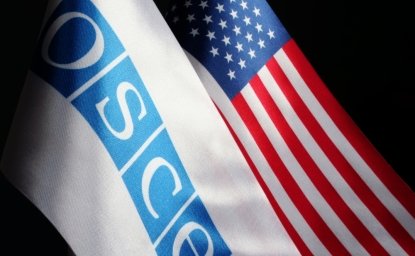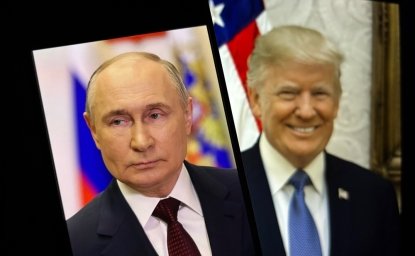U.S. Policy on Ukraine: Looking into the Future

"Many people in the U.S. who have been working on Ukraine over the past several years have felt they were swimming upstream," remarked John Tedstrom, Research Leader for Russian, Ukrainian, and Eurasian Affairs at RAND Corporation in Washington, D.C., at a Kennan Institute lecture on 11 January 1999. He posited that they have been swimming not upstream, but in the wrong river.
Tedstrom suggested that the U.S. make a strategic adjustment in its policy toward Ukraine in order to shift to "the right river." In essence, the U.S. should stop focusing on Ukraine as a former Soviet Republic and begin to look at it as an emerging European country. Tedstrom noted that 1999 is the year for this strategic adjustment to take place, as both the geopolitical conditions and the course of Ukraine's own "European choice strategy" have created ample opportunities for the shift.
The geopolitical environment that Ukraine finds itself in today has three parts, said Tedstrom. First, there is Western Europe, which is characterized by an increasing openness to enlargement. Second, there is Central Europe, where one can point to a number of outstanding success stories in terms of post-Soviet transformations that may serve as examples for Ukraine. The third dimension, said Tedstrom, is Ukraine itself. He explained that over the past several years Ukraine has distinguished itself internationally through successful regional cooperation and its relationship with NATO.
Tedstrom went on to describe the non-security dimension of Ukraine's present position. Ukraine has thus far been able to avoid the full financial meltdown that plagued Russia in the second half of 1998. While he lamented that Ukraine's internal reform has gone very slowly, he predicted that the ability of Ukraine to keep a steady hand on the macroeconomic tiller will serve the country well.
Moreover, the Ukrainian government has recently stepped up its commitment to a "European choice strategy," said Tedstrom. In March 1998 Ukraine ratified the partnership cooperation agreement with the European Union. Recently, high-level government and parliamentary committees have been formed to deal with issues of European integration.
All of these factors, according to Tedstrom, provide the U.S. with a unique opportunity to make a strategic adjustment in its policy in 1999. Tedstrom claimed that the NIS context, which is what informs U.S. policy today, does not have much to offer Ukraine. Ukraine increasingly rejects closer relations with the NIS or CIS. Moreover, there is no successful example of reform or state-building for Ukraine to follow in the NIS context, nor are there resources that can be mobilized within the NIS that would support Ukraine's reform efforts.
In addition, keeping U.S. policy toward Ukraine within an NIS context sends the wrong message to Moscow, Tedstrom explained. It illustrates that no matter what a former Soviet state does as far as cooperation with NATO and financial stabilization, it will never be considered an emerging European state.
A strategic adjustment in U.S. policy would move Ukraine forward on reform, would address concerns of Central European countries that will soon be members of important European and transatlantic institutions, and would send a positive message to Moscow about the benefits of transformation, said Tedstrom. Most importantly, it would acknowledge trends independently underway in the region.
According to Tedstrom, this strategic adjustment would entail several policies. The first is largely bureaucratic: in order to change the context that informs U.S. policy making on Ukraine, the Ukraine desks in U.S. agencies should eventually be moved from the NIS to the European department. Secondly, Tedstrom suggested that the U.S. heighten engagement with Western and Central European countries bilaterally and multilaterally on Ukraine.
Finally, the U.S. should support high-profile projects that have broad support within the Ukrainian government, include a Central European dimension, and encourage Ukraine to undertake reform measures. One example is the Eurasian Transportation Corridor from Odessa to Gdansk, which is highly supported in Ukraine and would create jobs for Polish refineries and encourage Ukraine to move forward with liberalizing its investment laws.
Tedstrom warned that there are two near-term issues that must be resolved before U.S. policy can be adjusted. The first is Ukraine's relationship with the IMF. He noted that IMF disbursements had been cut off in the fall of 1998; negotiations over their resumption are critical. The second issue is certification. On 18 February 1999 Secretary of State Albright must certify to Congress that Ukraine has made significant progress in the areas of economic reform and resolution of certain commercial cases raised by U.S. investors. Without certification, further assistance to Ukraine will be curtailed. Tedstrom suggested that a favorable IMF agreement would go far to help certify the issue of economic reform, but the resolution of commercial disputes is likely to be difficult.
However, should the IMF agreement and the Secretary of State's certification be successfully resolved, 1999 presents unique opportunities for the U.S. in its relationship with Ukraine. Taking advantage of those opportunities to adjust U.S. policy, concluded Tedstrom, will have tremendous payoffs over the short and medium term.
Author

Kennan Institute
After more than 50 years as a vital part of the Wilson Center legacy, the Kennan Institute has become an independent think tank. You can find the current website for the Kennan Institute at kennaninstitute.org. Please look for future announcements about partnership activities between the Wilson Center and the Kennan Institute at Wilson Center Press Room. The Kennan Institute is the premier US center for advanced research on Eurasia and the oldest and largest regional program at the Woodrow Wilson International Center for Scholars. The Kennan Institute is committed to improving American understanding of Russia, Ukraine, Central Asia, the South Caucasus, and the surrounding region through research and exchange. Read more

Explore More
Browse Insights & Analysis
The OSCE is a Good Value for America

Infographic | Russia's Illegal Annexation of Crimea

Russia’s Indigenous Communities and the War in Ukraine
